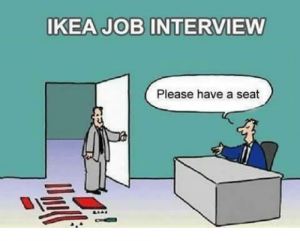
 I have recently returned from speaking at the International Recruitment Conference in Fiji where the theme was “Recruitment at the Speed of Tomorrow”. It was an inspiring couple of days learning about innovative ideas that are driving companies forward. In my session, I shared some of the key lessons I learnt whilst building a recruitment business and combating two of the biggest challenges in our industry – staff turnover and attracting top talent. The recruitment industry doesn’t have a good record in this area and I met several companies who had appalling staff turnover! One company has an average staff turnover of 60%! The owner openly admitted that he doesn’t incorporate any flexible arrangements in his business. I have a feeling that this might not be the only issue, but let’s hope he might take on a few of the following ideas:
I have recently returned from speaking at the International Recruitment Conference in Fiji where the theme was “Recruitment at the Speed of Tomorrow”. It was an inspiring couple of days learning about innovative ideas that are driving companies forward. In my session, I shared some of the key lessons I learnt whilst building a recruitment business and combating two of the biggest challenges in our industry – staff turnover and attracting top talent. The recruitment industry doesn’t have a good record in this area and I met several companies who had appalling staff turnover! One company has an average staff turnover of 60%! The owner openly admitted that he doesn’t incorporate any flexible arrangements in his business. I have a feeling that this might not be the only issue, but let’s hope he might take on a few of the following ideas:
Lesson 1: Business culture enables flexibility or kills it
I learnt the hard way that the traditional recruitment culture of long hours, where client is king and being available 24/7 makes it pretty difficult to attract and keep the best talent long-term. It doesn’t take long for people to get fed up from inflexible conditions. They suffer from burn out or pressure from loved ones ultimately deciding they can’t successfully integrate a work life blend. The recruitment culture typically demands 8am meetings, expects after hours commitments and compulsory candidate calling nights. It doesn’t genuinely embrace flexible arrangements successfully. It wasn’t an overnight fix – changing culture, implementing innovative ways of doing things and getting staff to trust that the new way is okay takes time.
Lesson 2: A leader’s support and mindset makes it possible (or not)
During the conference discussions, there were many leaders who have identified this is as the biggest area that is holding them back from being a truly flexible employer – their own bias, trust issues and the way they have always done things. If a leader can’t successfully change their mindset to trust, support and believe that flexibility will work, it won’t. Forget it. Don’t bother trying to implement, it will fail. Part-timers will feel constantly watched, guilty and that they have to constantly justify their arrangement. Leading from the front is critical.

Lesson 3: Flexibility isn’t a fad that will go away…….learn to incorporate it
Work/life balance, flexibility, part-time, working from home…are increasingly being demanded. The show of hands during my presentation suggested that nearly everyone had experienced some type of request in the past 12 months. As a business leader, being on the front foot and being prepared for these requests can ensure a higher success rate. Meet face to face, be open to new suggestions, and probe to find out the “real” reason for the request and a trial period might be a good starting point. I remember setting up structures to help make it easier for me to accept a request eg: abolishing 8am weekly meetings and moving to daily meetings to ensure all staff had the opportunity to contribute.
Lesson 4: Productivity and performance won’t suffer, it will thrive
A quick survey of recruitment owners via rossclennett.com, showed me that the biggest concern they had in regards to implementing flexible arrangements was loss of productivity. The thought of Consultants reducing their core hours, leads to an immediate concern for a reduction in billings. In my experience, through the implementation of team structures and providing tools of trade, it actually had the opposite effect. When given the autonomy, clear expectations and support, part-time Consultants proved that they could actually be just as or even more productive than their full-time counterparts.
Lesson 5: Essential ingredients for flexibility to work – teamwork & communication
Part-time successful Recruitment Consultants can’t exist or achieve significant results as a solo effort. Through trial and error, it became apparent to avoid full-time resentment and other’s ‘picking up the slack’; team structures and communication systems were essential. We moved from individual responsibility and accountability to team’s responsible for clients, jobs and candidates. It was the shared goals, offering full-time staff flexibility through buddy systems and days off, sharing of fees and rewarding team participation that proved that part-time ‘client facing’ roles did work.
Lesson 6: Take Action!
None of this is relevant, unless you are prepared to take action. So many companies talk about flexibility, put in their employer value proposition and hope that things will change. The best thing I ever did was jump in and give it a go. Our systems, structure and approach certainly weren’t perfect – I had to keep adapting and solving issues as they arose. But I can tell you that the outcomes and results were worth the sometimes-painful journey. I was able to say goodbye to thinking about people issues 24/7, retention rates soared to 5 – 6 years per Consultant, succession plans were developed, new consultants called us to join our business and the financial results increased.
Organisations who value workplace flexibility and embrace it will stand out from the crowd. You’ll not only start attracting more and better performing Consultants, you will actually start retaining them too! Don’t miss the opportunity to gain an edge on the competition to build a more productive and sustainable consultant workforce through fostering a positive and flexible culture.
A flexible workplace culture WILL create high performing and productive Consultants who stay (AND attract others just like them)






 This week I met up with a client who had over 150 emails in their inbox waiting for their attention. Just the thought made me squirm with discomfort! How can you possibly respond, action, remember or even read that many emails? How can you honestly be productive with that much content staring you in the face?
This week I met up with a client who had over 150 emails in their inbox waiting for their attention. Just the thought made me squirm with discomfort! How can you possibly respond, action, remember or even read that many emails? How can you honestly be productive with that much content staring you in the face? Nicole Underwood offers a range of consulting and workshop services to help other businesses implement similar success strategies. As a previous finalist in the prestigious Telstra Business Women Awards, a business coach and entrepreneur, Nicole partners with organisations to improve their leadership, performance and results. Contact Nicole
Nicole Underwood offers a range of consulting and workshop services to help other businesses implement similar success strategies. As a previous finalist in the prestigious Telstra Business Women Awards, a business coach and entrepreneur, Nicole partners with organisations to improve their leadership, performance and results. Contact Nicole 





 The Adelaide Advertiser ran an article on Saturday titled
The Adelaide Advertiser ran an article on Saturday titled 






 At the end of last term, it was my daughter’s turn to be the VIP for the week in her reception class. This is a confidence building strategy which involves the girls being interviewed by the Principal at the front of the class being asked about her family, favorite things, hobbies etc. Parents are invited along, the session is completely documented and then a full wall display including photos and quotes from the VIP is put up in the classroom. It is truly impressive.
At the end of last term, it was my daughter’s turn to be the VIP for the week in her reception class. This is a confidence building strategy which involves the girls being interviewed by the Principal at the front of the class being asked about her family, favorite things, hobbies etc. Parents are invited along, the session is completely documented and then a full wall display including photos and quotes from the VIP is put up in the classroom. It is truly impressive.